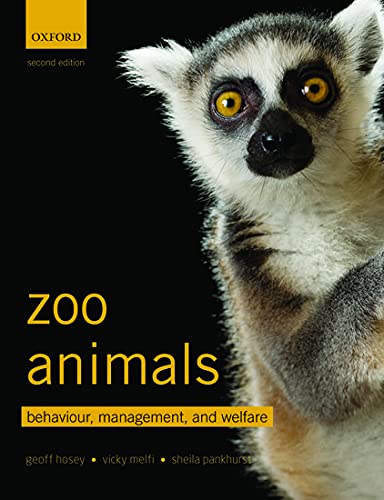

Most ebook files are in PDF format, so you can easily read them using various software such as Foxit Reader or directly on the Google Chrome browser.
Some ebook files are released by publishers in other formats such as .awz, .mobi, .epub, .fb2, etc. You may need to install specific software to read these formats on mobile/PC, such as Calibre.
Please read the tutorial at this link. https://ebooknice.com/page/post?id=faq
We offer FREE conversion to the popular formats you request; however, this may take some time. Therefore, right after payment, please email us, and we will try to provide the service as quickly as possible.
For some exceptional file formats or broken links (if any), please refrain from opening any disputes. Instead, email us first, and we will try to assist within a maximum of 6 hours.
EbookNice Team

Status:
Available4.6
27 reviews
ISBN 10: 0199693528
ISBN 13: 9780199693528
Author: Geoff Hosey, Vicky Melfi, Sheila Pankhurst
Chapter 1 Introduction
1.1 Who is this book for?
1.2 Sources of information
1.3 What do we mean by ‘zoo’?
1.4 The scope of the book
1.5 The naming of names
1.6 Finally … abbreviations
Chapter 2 History and philosophy of zoos
2.1 What is a zoo?
2.2 Menageries ancient and royal
2.3 The development of the modern zoo
2.4 The history of aquariums
2.5 Zoos today
2.6 The philosophy and ethics of zoos
Chapter 3 Regulatory framework
3.1 The law and legislative processes: a brief introduction
3.2 The international framework: global conventions, agreements, and regulations
3.3 Zoo legislation within the European Union
3.4 The regulatory framework for zoos in the UK: legislation and guidelines
3.5 Zoo legislation outside Europe
3.6 Zoo associations: from BIAZA and EAZA, to AZA, ZAA, and WAZA
Chapter 4 Behaviour
4.1 General principles
4.2 Animal behaviour in the zoo
4.3 Behavioural response to the zoo environment
4.4 Abnormal behaviours
4.5 Comparison with the wild
Chapter 5 Animal identification and record-keeping
5.1 The importance of knowing your animals
5.2 What species? Nomenclature and taxonomy
5.3 Identifying individual animals
5.4 Temporary artificial methods of individual identification
5.5 Permanent artificial methods of individual identification
5.6 Record-keeping: what information could, or should, be recorded?
5.7 Zoo record-keeping systems
Chapter 6 Housing and husbandry
6.1 The needs of many
6.2 Advances in enclosure design
6.3 Husbandry from birth to death
6.4 Studying how housing and husbandry affect captive animals
6.5 Guidelines and housing and husbandry recommendations
Chapter 7 Animal welfare
7.1 What is ‘animal welfare’?
7.2 Animal welfare science
7.3 What can affect zoo animal welfare?
7.4 Indices used to evaluate zoo animal welfare
7.5 Meeting the needs of zoo animals
Chapter 8 Environmental enrichment
8.1 What is ‘enrichment’?
8.2 The evolution of enrichment as a concept
8.3 The aims and goals of enrichment
8.4 Types of enrichment and their function
8.5 Enrichment evaluation
8.6 What makes enrichment effective?
8.7 The benefits of environmental enrichment
Chapter 9 Small population management
9.1 Reproductive biology
9.2 Issues and constraints on reproduction in captivity
9.3 Monitoring the reproductive status of animals in captivity
9.4 Providing a helping hand: assisted reproductive technologies
9.5 Rearing: facilitating the successful survival of offspring
9.6 Manipulating exotic animal reproductive output
9.7 Working towards self-sustaining populations in captivity
Chapter 10 Conservation
10.1 What is ‘conservation’ and why is it necessary?
10.2 The role of zoos in the conservation of biodiversity
10.3 Zoos as arks
10.4 Zoos and in situ conservation
10.5 Conservation of behaviour
10.6 How good are zoos at conserving biodiversity?
10.7 Conservation and zoos: looking to the future
Chapter 11 Health
11.1 What is ‘good health’?
11.2 Guidelines and legislation on the health of zoo animals
11.3 The role of zoo staff in zoo animal health care
11.4 Preventive medicine
11.5 Diseases of concern in zoo animals
11.6 The diagnosis and treatment of disease in zoo animals
Chapter 12 Feeding and nutrition
12.1 Feeding ecology
12.2 Basic nutritional theory
12.3 Guidelines and legislation on feeding zoo animals
12.4 Working out an animal’s dietary requirements
12.5 The supply of food
12.6 Food storage and preparation
12.7 Food presentation
12.8 Nutritional problems
Chapter 13 People in zoos
13.1 Zoo visitors: what do we know about them?
13.2 Education and awareness raising
13.3 Humans in the zoo: how do they affect the animals?
13.4 Training
Chapter 14 Research
14.1 Why is zoo research important?
14.2 What is ‘research’?
14.3 What is ‘zoo research’?
14.4 Some methodological difficulties in zoo research
14.5 Problems in the analysis of data
14.6 Multi-zoo studies
14.7 Disseminating the results of zoo research
14.8 What zoo research still needs to be done?
Chapter 15 We hope you enjoyed your visit
15.1 Evaluation
15.2 The shape of the collection
15.3 Sustainability
15.4 Careers in zoos
zoo animals: behaviour, management, and welfare
zoo animals behaviour management and welfare pdf
zoo animals behaviour management and welfare 2nd edition
zoo animals behaviour management and welfare. hosey melfi & pankhurst
how do zoos affect animals mental health
Tags: Geoff Hosey, Vicky Melfi, Sheila Pankhurst, Zoo Animals